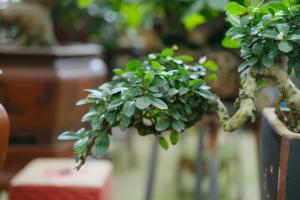What Type of Oak Tree Should I Plant?
If you're looking for a long-lasting and beautiful addition to your landscape, planting an oak tree is a great choice. Known for their towering height and broad canopy, oak trees provide shade, wildlife habitat, and a stunning autumn display of colors. However, with over 60 species of oak trees available in North America, it can be difficult to choose the best one for your specific location and needs.
Consider Your Climate
The first step in selecting an oak tree is to consider your local climate. Some oak species thrive in cooler climates, while others are adapted to warmer and drier conditions. For example, if you live in the Northeastern United States, Northern Red Oak (Quercus rubra) would be a great choice. On the other hand, if you live in the hot and dry Southwest, you might consider planting the Desert Willow Oak (Quercus fusiformis) for its drought tolerance.
Think About Your Soil
Oak trees typically prefer well-drained soils that are rich in nutrients. Before choosing a species, it's important to test your soil to ensure it meets the necessary requirements. Some oak trees are more adaptable to different soil types than others. For example, the Pin Oak (Quercus palustris) prefers moist soils but can tolerate some dryness, while the White Oak (Quercus alba) grows best in well-drained soils.
Consider the Size of Your Space
Another factor to consider when selecting an oak tree is the size of your available space. Some species of oak trees are naturally tall and broad, while others tend to be more slender and compact. When planting your oak tree, make sure to leave enough room for it to grow to its full potential. For smaller spaces, you might consider a variety like the Willow Oak (Quercus phellos), which typically grows to a height of 40-60 feet.
Think about the Tree's Purpose
Before making your final selection, consider the purpose of your oak tree. Are you planting it for shade or to attract wildlife? Are you looking for a hardy tree that can tolerate harsh conditions? Oak trees can serve many purposes, so it's important to choose a species that aligns with your specific goals. For example, the Swamp White Oak (Quercus bicolor) is known to attract wildlife such as birds and squirrels and is tolerant of wet soils. On the other hand, the Overcup Oak (Quercus lyrata) is a sturdy tree that can withstand heavy winds and flooding.
Conclusion
Planting an oak tree can be a rewarding and enjoyable experience. By considering your climate, soil, available space, and tree purpose, you can choose the perfect species for your landscape. With proper planting and care, your oak tree will thrive and provide shade, wildlife habitat, and beauty to your yard for generations to come.

 how many times do yo...
how many times do yo... how many planted tre...
how many planted tre... how many pine trees ...
how many pine trees ... how many pecan trees...
how many pecan trees... how many plants comp...
how many plants comp... how many plants can ...
how many plants can ... how many plants and ...
how many plants and ... how many pepper plan...
how many pepper plan...
































